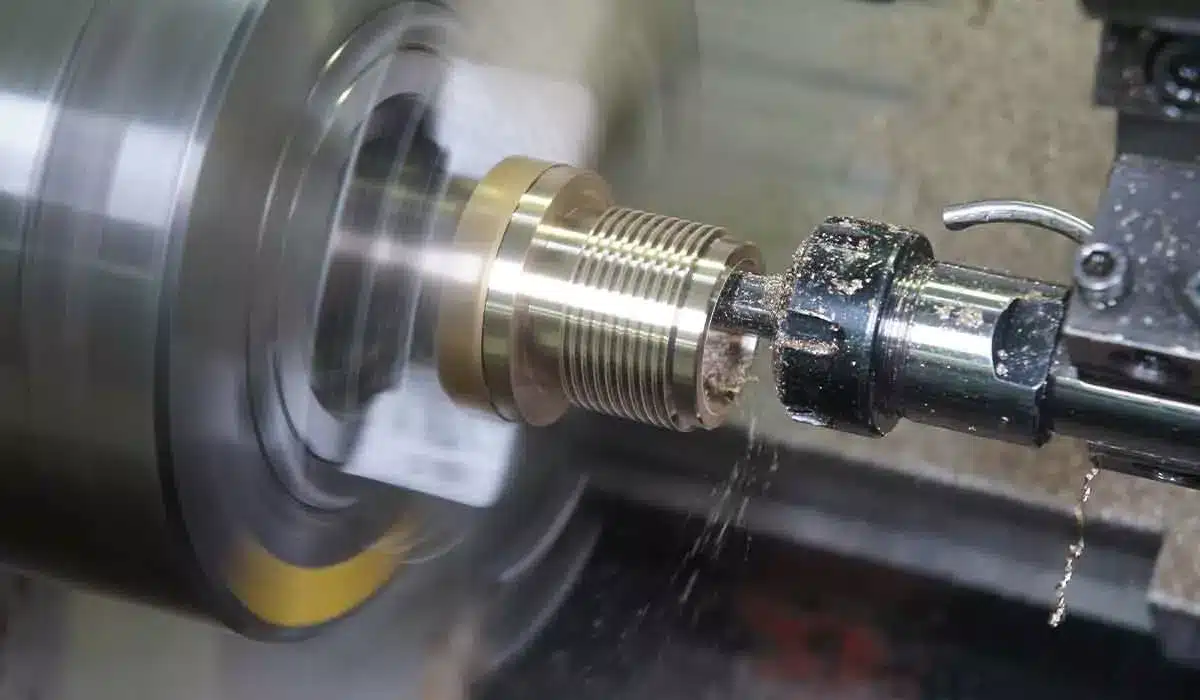Struggling to meet large orders without sacrificing quality or blowing your budget? Missed deadlines and unhappy customers can cripple your business. High volume manufacturing offers an efficient, cost-effective solution.
High volume manufacturing benefits your business by reducing costs, ensuring consistent quality, boosting efficiency, and enabling scalability with advanced processes like high volume CNC machining.
Let’s dive into how high volume manufacturing can transform your production and drive success.
What is High Volume Manufacturing?
High volume manufacturing refers to the production of large quantities of goods using automated processes to achieve efficiency, consistency, and cost-effectiveness. It’s a cornerstone of modern industry, enabling businesses to meet massive demand without compromising quality. Often associated with high volume machining, this approach leverages technologies like CNC machines to produce thousands or millions of parts rapidly and precisely.
The process is designed for scale. By standardizing production and minimizing manual intervention, high volume production machining ensures uniformity across every piece. This is especially vital for industries like automotive, aerospace, and electronics, where precision and reliability are non-negotiable. Unlike traditional methods, high volume manufacturing uses automation to streamline workflows, reduce errors, and optimize resource use.
Historically, manufacturing evolved from labor-intensive craftsmanship to mechanized systems during the Industrial Revolution. Today, high volume manufacturing processes incorporate cutting-edge tools like CNC machines, robotics, and software to push efficiency further. For example, a single CNC machine can produce high volume precision turned parts continuously, replacing what once took multiple workers days to complete.
Key characteristics include automation, repeatability, and speed. In high volume CNC machining, computer programs control tools to execute complex designs with tight tolerances repeatedly. This eliminates variability, ensuring each part—whether the 10th or the 10,000th—meets exact specifications. Additionally, the integration of robotic arms for material handling and automated quality checks enhances throughput.
Industries adopting high volume production benefit from its ability to handle diverse materials and intricate designs. From metal components to plastic casings, the flexibility of these systems supports a wide range of applications. Ultimately, high volume manufacturing is about delivering quality at scale, making it indispensable for businesses aiming to stay competitive in fast-paced markets.
High-Volume CNC Machining Process
The high-volume CNC machining process is a sophisticated sequence that turns digital designs into physical parts with precision and speed. It begins with design, where engineers use CAD (Computer-Aided Design) software to create detailed 3D models. These models are then translated into machine instructions via CAM (Computer-Aided Manufacturing) software, defining toolpaths for cutting, drilling, or milling.
Setup follows programming. Operators install cutting tools, secure workpieces using fixtures, and load the CNC program. In high volume production machining, fixturing is optimized to hold multiple parts, reducing setup time across large runs. This preparation ensures machines can operate efficiently without constant adjustments, a critical factor in maintaining throughput.
Once initiated, the CNC machine executes the program, automating tasks like milling, turning, or grinding. Precision is paramount—each part replicates the design identically, thanks to computer control. For high volume machining, this repeatability eliminates human error, ensuring consistency whether producing 1,000 or 100,000 units. Advanced techniques like high-speed machining further accelerate the process by increasing spindle speeds and feed rates.
Quality control is embedded throughout. Statistical Process Control (SPC) monitors production, while in-process sensors or probes provide real-time feedback on dimensions and tool wear. This proactive approach catches issues early, minimizing defects in high volume precision turned parts. Post-machining steps—deburring, finishing, or coating—prepare parts for final use, followed by rigorous inspection to confirm tolerances.
Efficiency drives the process. Optimized toolpaths reduce cycle times, and coolant systems manage heat to extend tool life. In high volume manufacturing processes, automation extends to material handling, with robotic arms or conveyors moving parts seamlessly. The result? A streamlined workflow that delivers large quantities quickly, safely, and cost-effectively, meeting the demands of modern production schedules.
Materials and Technologies Used in High-Volume CNC Machining
High volume CNC machining accommodates a broad spectrum of materials, each chosen for specific properties suited to end-use applications. Metals like aluminum, steel, stainless steel, titanium, and brass are staples due to their strength and machinability. Aluminum, for instance, is lightweight and corrosion-resistant, ideal for automotive parts. Titanium, though harder to machine, offers unmatched durability for aerospace components.
Plastics also play a significant role. ABS, polycarbonate, nylon, and PEEK provide lightweight, cost-effective alternatives with excellent resistance to wear or chemicals. These are common in electronics and consumer goods. Composites, such as carbon fiber-reinforced polymers, cater to industries needing high strength-to-weight ratios, like aerospace or sports equipment. Material selection hinges on function, environment, and budget.
Technologically, high volume production machining relies on advanced tools. Multi-axis CNC machines—capable of moving in four, five, or more directions—enable complex geometries in a single setup, slashing production time. High-speed machining boosts efficiency with rapid spindle speeds, delivering smoother finishes faster. Automated tool changers switch tools mid-process, supporting uninterrupted multi-operation runs.
CAD/CAM software is the backbone, converting designs into precise instructions while optimizing cutting paths. In-process monitoring systems, using sensors or vision technology, track tool condition and part accuracy, ensuring quality in high volume precision turned parts. Robotics enhance automation, handling loading, unloading, and part transfer, minimizing downtime.
Emerging Industry 4.0 innovations—like IoT for real-time data and predictive maintenance—elevate high volume manufacturing processes. In automotive, multi-axis machines craft intricate steel engine parts. In electronics, high-speed CNCs shape aluminum casings. Together, these materials and technologies make high volume CNC machining versatile, efficient, and reliable across industries.
Advantages of High Volume CNC Machining
High volume CNC machining delivers a suite of advantages that empower businesses to thrive in competitive markets. First, it ensures consistent quality. CNC machines execute programmed instructions with pinpoint accuracy, producing identical parts across massive runs. This uniformity is critical for industries like medical devices, where deviations could compromise safety or compliance.
Second, it boosts efficiency. Automation enables 24/7 operation with minimal downtime, far outpacing manual methods. High-speed machining and optimized toolpaths cut production time, allowing companies to meet tight deadlines. For example, a production machining company can churn out thousands of components daily, keeping supply chains humming.
Third, scalability is a game-changer. As demand rises, manufacturers can ramp up output by adding machines or extending shifts without sacrificing precision. This flexibility supports growth without the proportional cost increases of traditional setups. It’s why high volume production suits businesses from startups to industry giants.
Fourth, it tackles complex designs. Multi-axis CNC machines handle intricate geometries and tight tolerances unattainable manually, fostering innovation in product development. Aerospace firms, for instance, rely on this for precision turbine blades. Meanwhile, high volume precision turned parts enhance functionality across applications.
Fifth, it reduces waste. Precise machining minimizes material overruns, aligning with sustainable practices and cutting costs. Automation also lowers labor needs, reducing human error and rework expenses. In electronics, this precision ensures every tiny component fits perfectly, avoiding costly recalls.
Finally, high volume machining offers versatility. Quick program adjustments allow shifts between designs, balancing large runs with adaptability. Collectively, these benefits—quality, speed, scalability, complexity, efficiency, and flexibility—position high volume CNC machining as a cornerstone of modern manufacturing success.
High-Volume Production Can Reduce Production Costs
High volume production slashes costs, making it a strategic choice for cost-conscious businesses. A primary driver is economies of scale. Purchasing materials in bulk—say, steel or plastic—secures supplier discounts, lowering per-unit expenses. For instance, ordering 10,000 units of aluminum might cut costs by 15-20% compared to smaller batches.
Automation further reduces labor costs. In high volume CNC machining, machines handle repetitive tasks, minimizing the need for skilled operators. A single technician can oversee multiple units, unlike manual processes requiring extensive manpower. This efficiency trims payroll while maintaining output, a boon for production machining companies.
Setup costs also shrink with volume. Initial programming and fixturing for high volume machining are amortized over thousands of parts. A setup costing $1,000 becomes pennies per unit at 10,000 pieces, versus dollars at 100. Tooling, though pricey upfront, follows suit—high-quality tools last longer, spreading costs thin across large runs.
Energy efficiency plays a role too. Modern CNC machines optimize power use, and running them at capacity maximizes energy per part. Waste reduction adds savings; precise cuts in high volume manufacturing processes minimize scrap, preserving raw material budgets. In automotive, this might save tons of steel annually.
Real-world impact? A company machining 50,000 connectors could see per-unit costs drop 25-30% versus 5,000, factoring in materials, labor, and overhead. High volume production machining thus delivers affordability without quality trade-offs, enabling competitive pricing and higher margins for businesses scaling up.
High-Volume CNC Machining Industries
High volume CNC machining powers diverse industries, meeting their unique demands with precision and scale. In automotive, it produces engine blocks, gears, and chassis parts in the millions, ensuring consistency across vehicles. Aluminum and steel components benefit from rapid, repeatable machining for reliability and performance.
Aerospace relies on it for safety-critical parts like turbine blades and structural frames. Titanium and composites, machined with tight tolerances, meet stringent standards, supporting high volume production for aircraft fleets. Precision here is non-negotiable, and CNC delivers.
Electronics thrives on high volume precision turned parts. Smartphone casings, connectors, and heat sinks—often aluminum or plastic—are churned out quickly to keep pace with consumer demand. Miniaturization and accuracy are key, enabled by advanced CNC technology.
Medical devices depend on high volume machining for implants, surgical tools, and diagnostic gear. Stainless steel and titanium parts must be identical to pass regulatory muster, and CNC ensures quality at scale for healthcare providers worldwide.
Consumer goods—appliances, furniture, sporting equipment—incorporate machined parts for durability. High volume production keeps costs low, making products affordable. Defense, too, uses it for rugged vehicle components and weaponry, demanding precision in bulk.
Across these sectors, high volume manufacturing processes drive innovation and efficiency, supporting everything from mass-market goods to specialized applications with unmatched scalability and reliability.
Why Choose ZHUANXIN for High Volume CNC Machining Services?
For high volume CNC machining, ZHUANXIN stands out as a premier partner. Their experience spans years, delivering high volume precision turned parts across industries like automotive and aerospace. This expertise ensures flawless execution of complex projects.
ZHUANXIN’s state-of-the-art equipment—multi-axis machines, robotic systems—guarantees efficiency and precision in high volume production machining. Cutting-edge technology translates to faster turnarounds and consistent quality, critical for large-scale needs.
Quality assurance is rigorous. In-process monitoring and final inspections ensure every part meets specs, minimizing defects in high volume machining. This reliability builds trust, especially for precision-driven sectors like medical devices.
Their customer service shines. ZHUANXIN collaborates closely, tailoring solutions to your goals—whether cost, speed, or design complexity. This responsiveness sets them apart among production machining companies.
Competitive pricing comes from optimized processes and economies of scale. ZHUANXIN delivers value without cutting corners, ideal for businesses scaling up. Their scalability—handling thousands to millions of parts—adapts seamlessly to your growth.
Choosing ZHUANXIN means partnering with a leader in high volume manufacturing processes, committed to driving your success with top-tier service and results.
FAQs
Q: What defines high volume machining?
A: High volume machining involves producing large quantities—typically 1,000+ units—using automated processes like CNC for efficiency and precision.
Q: How fast is high volume CNC machining?
A: Setup takes time, but once running, high volume production machining cuts per-unit time significantly, speeding up large orders.
Q: Can it handle unique designs?
A: Yes, high volume CNC machining excels at custom parts with detailed CAD models, maintaining accuracy across runs.
Q: How are costs reduced?
A: Bulk materials, automation, and amortized setups in high volume production lower per-unit costs substantially.
Q: What industries use ZHUANXIN’s services?
A: ZHUANXIN supports automotive, aerospace, electronics, and more with tailored high volume manufacturing processes.
Conclusion
High volume manufacturing, especially through high volume CNC machining, offers businesses cost savings, consistent quality, and scalability. It powers industries like automotive and aerospace with efficient, precise production. Partnering with ZHUANXIN ensures top-tier service and results, leveraging advanced technology to meet your needs. Embrace high volume production machining to boost competitiveness and growth.






